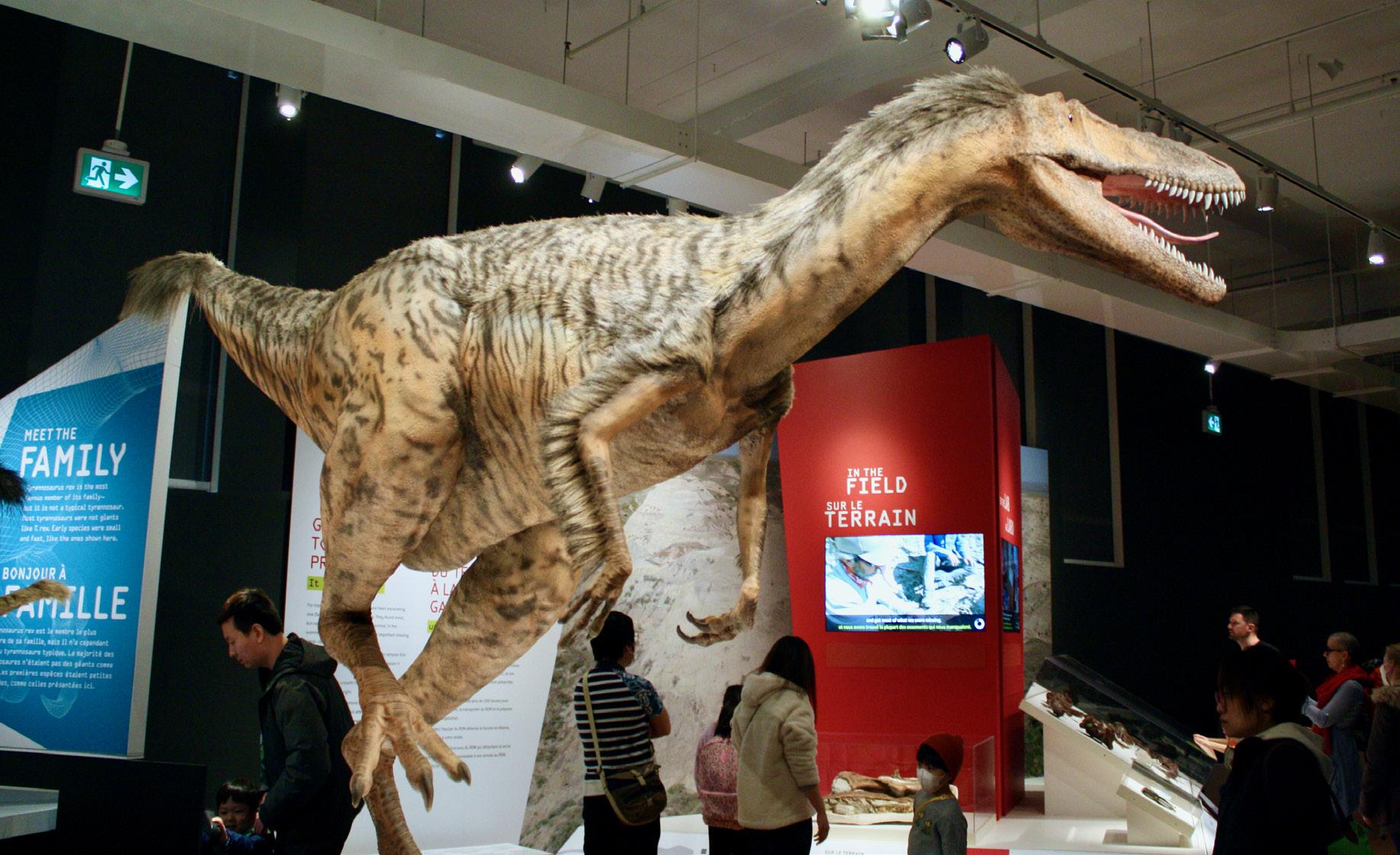
3 minute read
Floyd Kuptana exhibits Inuit sculptures at Gallery Arcturus
Shayonna Cole
News Reporter
Advertisement
Inuit artist Floyd Kuptana started his career by sanding and polishing the carvings of his cousins Francis and Abraham Anghik. He then became an apprentice to artist David Ruben Piqtoukun, the older brother of Abraham and Francis.
It was only in the mid-to-late 1940s that Indigenous peoples of the Canadian Arctic and subarctic regions began living in fixed communities where modern Inuit art developed.
In Canada and other countries, contemporary Inuit art grew in popularity as the Canadian government promoted stone carvings and other forms of artistic expression.
Gallery Arcturus, an art gallery on Gerrard Street East near Church Street in downtown Toronto, features several art pieces by Kuptana. He connected with the gallery in the late 2000s and started working with paint before switching to an artboard and canvas.
Ed Drass, the communication manager and host at Gallery Arcturus, said Kuptana was a creative artist who visited the gallery frequently.
“We occasionally get fans, particularly of Floyd Kuptana who was a very interesting character,” Drass said. “Some people knew him — for good or bad.”
The gallery now has two works,
“Sedna” and “Self-Portrait,” in its permanent collection, and many others on loan to the gallery can be seen across the display spaces.
“He was very prolific. He made a lot of sculptures, a lot of paintings, and also a lot of pastels which we have,” Drass said.
Kuptana, who died two years ago, has several sculptures featured in multiple galleries across Toronto.

“Even during covid, we’d hear from him quite often. He’ll be painting and call us up and we would just talk cause he was trying to paint, and he was otherwise isolated at home,” Drass said.
“Right now, there’s a retrospective of his work. Unfortunately, he died just almost two years ago,” he said.
Blue Crow Gallery is another gallery located in downtown Toronto that promotes Indigenous artwork by Inuit artists.
It hosts its annual Kid Program that encourages children to build on their art skills and expand their illustration techniques in the art world.
“I had participated in our summer group show the year before I applied to work here,” said Tina Fucher, an artist and gallery assistant at Blue Crow Gallery.
“When I came to drop off my art piece, I had such a lovely experience chatting with the owner Jody Miller, that when I saw the job posting go up, it was just a perfect fit,” she said.
Fucher’s artwork has a high level of detail allowed by stippling with micron ink pens. Her current body of work explores the necessary struggle for collective liberation, as well as examines its effects on our mental health and culture.
She aspires to open people’s hearts and minds to the intrinsic importance of all human and nonhuman animal life through various means, including art.
“Our artwork is changing all the time so I’m always looking forward to seeing what’s new,” she said. “When I look at the pieces in this gallery, I always think of the fun that the artists bring to our workshops.”
Natalia Lebedinskaia, the gallery preparator at Urban Shaman Con- temporary Aboriginal Art in Winnipeg, said it’s important to recognize Indigenous artists through the pieces they create.
“During my 15 years of working here, I’ve met a majority of the artists that sell their work in this gallery,” Lebedinskaia said.
“Many of them have heartbreaking stories and obstacles that challenged them to get to where they are, so essentially I think it’s important that they can have a safe space to live and to create art,” she said.
Urban Shaman Contemporary Aboriginal Art was founded in 1996 and is one of many galleries in Winnipeg that features First Nations, Métis, and Inuit art.
“You get that raw feeling of seeing how each artist expresses themselves and eventually, in a way, the history just bursts out at you,” Lebedinskaia said.
Kuptana’s artwork is on display at Gallery Arcturus as of March 2023 for the public to enjoy.
“I get to work in a room like this, and I do take it for granted sometimes,” Drass said. “There’s another element to that. I imagine even people that work in the Louvre, start to take things for granted, and they walk by the Mona Lisa 200 times, and they don’t see it anymore.”
“The same thing can happen here. I’m surrounded by really interesting objects, but there’s a huge human habit of stopping and seeing things,” he said.










